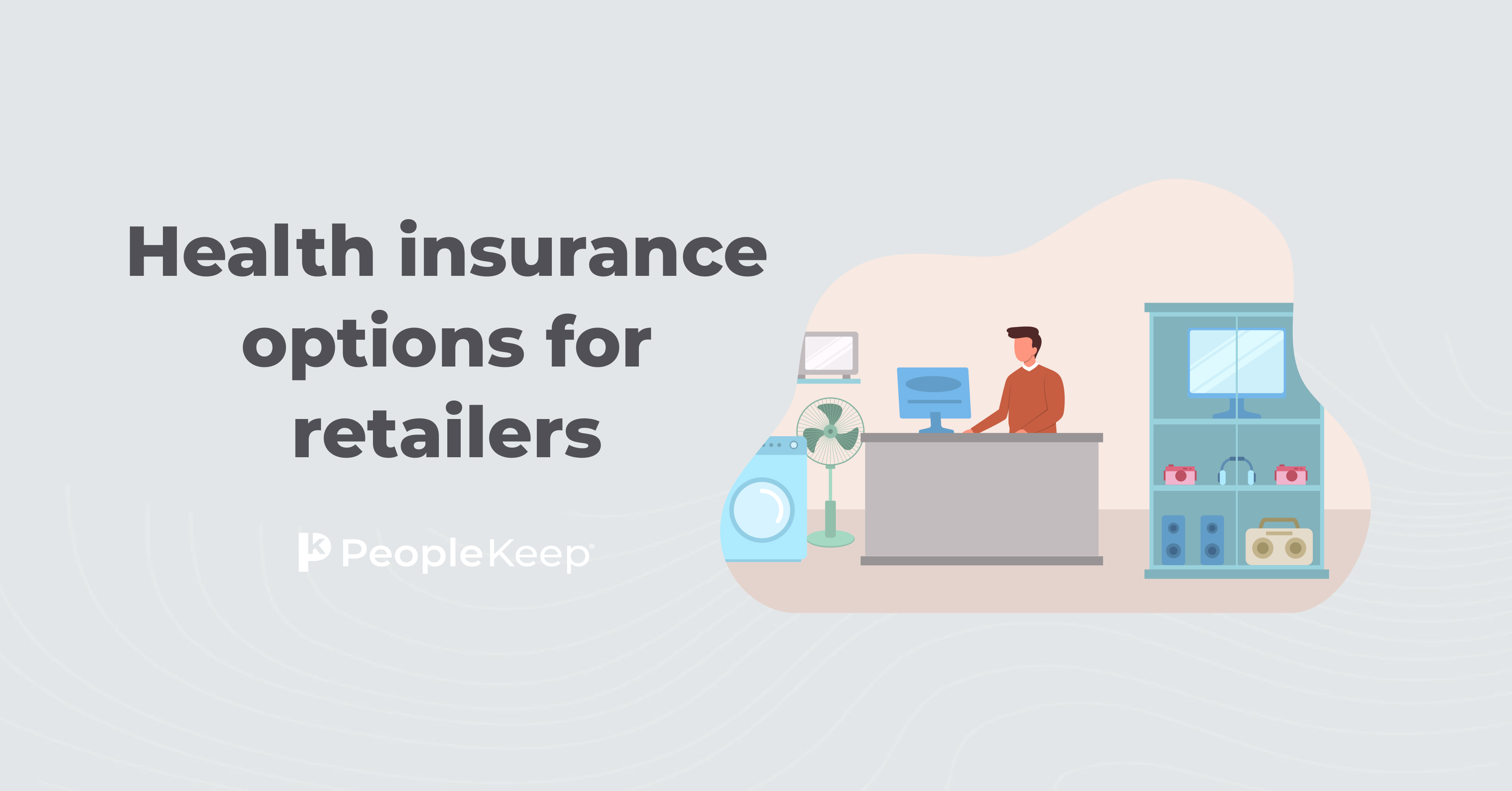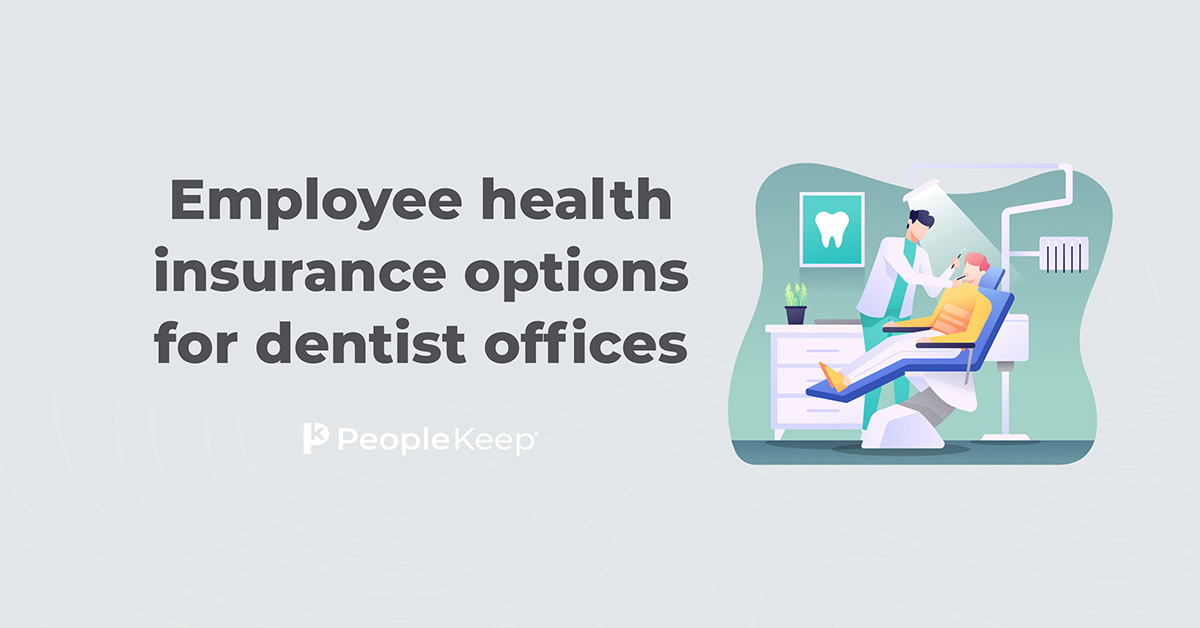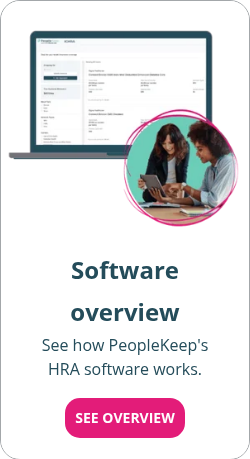Best states for an HRA
By Holly Bengfort on January 31, 2024 at 8:49 AM
Health reimbursement arrangements (HRAs) have become increasingly popular among business owners as a cost-effective alternative to traditional group health insurance. With an HRA, employers can reimburse employees for their health insurance instead of buying them coverage.
HRAs can benefit everyone, but in some states, individual insurance is substantially cheaper than small group health insurance coverage, which can be advantageous for employers in those areas.
In this article, we'll go over what an HRA is, some common types of HRAs, and some of the best states for this health benefit.
Takeaways from this blog post:
- Health reimbursement arrangements (HRAs) help employees cover their medical costs and individual health insurance premiums.
- Several types of HRAs are available, including the QSEHRA, ICHRA, GCHRA, and EBHRA, each with specific eligibility requirements and contribution limits.
- Georgia, Ohio, Indiana, and Virginia are some of the best states for offering HRAs to employees.
What's an HRA?
An HRA is an IRS-approved, employer-funded health benefit. It allows employers to reimburse employees for eligible medical expenses, such as health insurance premiums, deductibles, co-pays, prescription drugs, and other out-of-pocket healthcare costs.
Employers set a monthly benefit allowance for their employees. Employees then submit proof of their qualified health expenses for reimbursement. Once the employer or HRA administrator approves the expense, they reimburse employees up to their allowance amount.
What are the benefits of HRAs?
The top benefit of an HRA for employers is the health savings. HRAs provide cost control for employers by eliminating the need to offer expensive group health insurance plans, not to mention the annual rate hikes that come with them. Employers can tailor an HRA to meet their specific needs and budget. Unused funds at the end of the year also stay with the employer.
As for the employees, HRAs provide them with a convenient and cost-effective way to manage their medical expenses. Plus, they have more flexibility in choosing their healthcare providers and treatments. Instead of getting stuck with a one-size-fits-all group policy, they can choose the individual health insurance policy that's best for them.
Now, to the tax benefits. HRA reimbursements are exempt from payroll taxes for employers. Additionally, if employees have a policy that provides minimum essential coverage (MEC), such as one purchased on state or federal marketplaces, their HRA funds are also exempt from income taxes.
Additionally, HRAs are a valuable tool for recruitment and retention. Health coverage is one of the most important benefits employers can offer. According to our 2022 Employee Benefits Survey Report, 87% of employees said they value health insurance benefits, and 92% of employers offer a health benefit. Without a quality health benefit, you could have a smaller candidate pool and increased employee turnover.
What are the different types of HRAs?
There are several different HRA types that employers can offer to their employees.
Here are some of the most common HRAs:
- Qualified small employer HRA (QSEHRA): The QSEHRA is for small businesses with fewer than 50 full-time equivalent (FTE) employees. All W-2 employees are eligible regardless of their insurance status. A QSEHRA can reimburse employees for insurance premiums, out-of-pocket costs, or both.
- Individual coverage HRA (ICHRA): The ICHRA works for employers of all sizes. It works as a standalone benefit or as an alternative health benefit for employee classes that don’t qualify for your traditional group health plan. An ICHRA can reimburse employees for individual health insurance premiums, out-of-pocket expenses, or both.
- Group coverage HRA (GCHRA): The GCHRA, or integrated HRA, works alongside a group health insurance policy, such as a high deductible health plan. It helps cover out-of-pocket medical expenses that aren’t fully paid for by the group health insurance plan. A GCHRA doesn't reimburse insurance premiums.
- Excepted benefit HRA (EBHRA): Like the GCHRA, the EBHRA supplements traditional health plans by allowing employers to reimburse their employees for additional coverage their group plan doesn’t include, like dental or vision costs.
Each type of HRA has specific rules regarding eligibility requirements and annual contribution limits, making it important for employers to understand the options and choose the one that best fits their needs.
What are the best states for HRAs?
If you're considering offering an HRA to your employees, you may be wondering which states are best for this type of benefit. While an HRA is an excellent health benefit for organizations in any state, they’re especially advantageous in states with lower individual health insurance costs.
This is because a QSEHRA or ICHRA can reimburse employees for their marketplace premiums. In states where insurance premiums are cheaper, organizations won’t need to offer as high of an allowance as in states where coverage is more expensive.
Here are a few states where individual health insurance coverage is often cheaper than group coverage based on the average 2024 insurance rates1:
1. Ohio
In Ohio, individual health insurance tends to be more affordable than group coverage in almost every county. Ohio residents use the federal Health Insurance Marketplace to enroll in a policy.
The chart below shows the difference in monthly premiums for Ohio's three most populated counties.
|
County |
27-year-old |
50-year-old |
|||
|
Average small group coverage premium cost |
Individual silver-level premium cost |
Average small group coverage premium cost |
Individual silver-level premium cost |
Savings with an individual plan |
|
|
Franklin |
$579/month |
$324/month |
$987/month |
$552/month |
44% |
|
Cuyahoga |
$520/month |
$326/month |
$887/month |
$556/month |
37% |
|
Hamilton |
$524/month |
$315/month |
$894/month |
$537/month |
40% |
2. Georgia
Georgia employers would benefit from offering HRAs. Individual health insurance is generally the more affordable option in nearly every county. Georgia residents can shop for individual plans using the federal health insurance marketplace.
The chart below shows the difference in monthly premiums for Georgia's three most populated counties.
|
County |
Average small group coverage premium cost for a 27-year-old |
Individual silver-level premium cost for a 27-year-old |
Average small group coverage premium cost for a 50-year-old |
Individual silver-level premium cost for a 50-year-old |
Savings with an individual plan |
|
Fulton |
$420/month |
$335/month |
$716/month |
$571/month |
20% |
|
Gwinnett |
$420/month |
$335/month |
$716/month |
$571/month |
20% |
|
Cobb |
$420/month |
$335/month |
$716/month |
$571/month |
20% |
Costs can also differ substantially in rural Georgia counties. For example, silver individual health insurance costs 46% less than small group coverage in Lowndes County.
3. Florida
Florida employers can save money by offering an HRA to their employees. In most Florida counties, individual health insurance coverage is cheaper than group coverage. Florida residents can compare individual plans on the federal Health Insurance Marketplace.
The chart below shows the difference in monthly premiums for Florida's three most populated counties.
|
County |
Average small group coverage premium cost for a 27-year-old |
Individual silver-level premium cost for a 27-year-old |
Average small group coverage premium cost for a 50-year-old |
Individual silver-level premium cost for a 50-year-old |
Savings with an individual plan |
|
Miami-Dade |
$384/month |
$347/month |
$654/month |
$592/month |
9% |
|
Broward |
$330/month |
$307/month |
$562/month |
$523/month |
7% |
|
Palm Beach |
$384/month |
$343/month |
$654/month |
$584/month |
11% |
4. Indiana
Not only does individual health insurance tend to be cheaper in Indiana, but employers can also get a new tax credit for offering an HRA for the first time.
Under the law, organizations with fewer than 50 employees can receive a state tax credit for the next two years. Employers can claim up to $400 per employee in the first year and $200 in the second year if the QSEHRA or ICHRA provides equal or greater value than the organization’s previous health plan in the previous plan year.
The chart below shows the difference in monthly premiums for Indiana's three most populated counties.
|
County |
Average small group coverage premium cost for a 27-year-old |
Individual silver-level premium cost for a 27-year-old |
Average small group coverage premium cost for a 50-year-old |
Individual silver-level premium cost for a 50-year-old |
Savings with an individual plan |
|
Marion |
$370/month |
$323/month |
$630/month |
$550/month |
13% |
|
Lake |
$391/month |
$308/month |
$666/month |
$524/month |
21% |
|
Allen |
$387/month |
$366/month |
$660/month |
$624/month |
5% |
5. Virginia
HRAs also work well in Virginia, where individual health insurance is cheaper on average than group coverage in almost every county. Virginia residents use a state-based exchange to shop for coverage.
The chart below shows the difference in monthly premiums for Virginia's three most populated counties.
|
County |
Average small group coverage premium cost for a 27-year-old |
Individual silver-level premium cost for a 27-year-old |
Average small group coverage premium cost for a 50-year-old |
Individual silver-level premium cost for a 50-year-old |
Savings with an individual plan |
|
Fairfax |
$315/month |
$247/month |
$537/month |
$421/month |
22% |
|
Prince William |
$315/month |
$247/month |
$537/month |
$421/month |
22% |
|
Virginia Beach |
$328/month |
$263/month |
$559/month |
$449/month |
20% |
6. Colorado
Colorado has been proactive in expanding access to healthcare and supporting HRAs. Colorado's state-based health insurance marketplace also provides additional options for employees to find coverage.
The chart below shows the difference in monthly premiums for Colorado's three most populated counties.
|
County |
Average small group coverage premium cost for a 27-year-old |
Individual silver-level premium cost for a 27-year-old |
Average small group coverage premium cost for a 50-year-old |
Individual silver-level premium cost for a 50-year-old |
Savings with an individual plan |
|
El Paso |
$317/month |
$294/month |
$541/month |
$501/month |
7% |
|
Denver |
$332/month |
$269/month |
$566/month |
$459/month |
19% |
|
Arapahoe |
$332/month |
$269/month |
$566/month |
$459/month |
19% |
7. Minnesota
Minnesota employers can also benefit from offering HRAs. Individual insurance coverage tends to be cheaper than group coverage across most of the state. Minnesota can shop for individual plans on the state-based exchange.
The chart below shows the difference in monthly premiums for Minnesota's three most populated counties.
|
County |
Average small group coverage premium cost for a 27-year-old |
Individual silver-level premium cost for a 27-year-old |
Average small group coverage premium cost for a 50-year-old |
Individual silver-level premium cost for a 50-year-old |
Savings with an individual plan |
|
Hennepin |
$291/month |
$248/month |
$496/month |
$422/month |
15% |
|
Ramsey |
$291/month |
$248/month |
$496/month |
$422/month |
15% |
|
Dakota |
$309/month |
$248/month |
$527/month |
$422/month |
20% |
8. Washington
Washington state is known for its progressive policies on healthcare and support for employee benefits. Washington also has its own health insurance exchange, giving employees more options for healthcare coverage.
The chart below shows the difference in monthly premiums for Washington's three most populated counties. While group coverage is slightly more affordable in King County, individual coverage is cheaper in Pierce and Snohomish counties.
|
County |
Average small group coverage premium cost for a 27-year-old |
Individual silver-level premium cost for a 27-year-old |
Average small group coverage premium cost for a 50-year-old |
Individual silver-level premium cost for a 50-year-old |
Savings with an individual plan |
|
King |
$308/month |
$322/month |
$525/month |
$548/month |
-4% |
|
Pierce |
$330/month |
$310/month |
$563/month |
$529/month |
6% |
|
Snohomish |
$321/month |
$311/month |
$546/month |
$531/month |
3% |
While the percentage of savings may seem small in Washington, this changes when you look at a gold-level plan, which comes with higher premiums than a silver plan.
|
County |
Average small group coverage premium cost for a 27-year-old |
Individual gold-level premium cost for a 27-year-old |
Average small group coverage premium cost for a 50-year-old |
Individual gold-level premium cost for a 50-year-old |
Savings with an individual plan |
|
King |
$368/month |
$320/month |
$626/month |
$545/month |
13% |
|
Pierce |
$386/month |
$312/month |
$658/month |
$532/month |
19% |
|
Snohomish |
$403/month |
$310/month |
$687/month |
$529/month |
23% |
Keep in mind that this isn't a complete list of states where HRAs are a no-brainer. There are several others, such as New Mexico and New York, where individual insurance coverage is cheaper than group coverage, so you'll want to do your research. It's also important to note that states could have their own regulations and requirements for providing health benefits. You should consult with legal and benefits professionals to ensure compliance.
Why should you use an HRA administrator?
If you want to offer an HRA, you don’t have to do it alone. Using an HRA administrator like PeopleKeep can help streamline the entire reimbursement process, making it easier and more efficient for employers and employees.
Our award-winning customer support team handles the administrative work for you, such as verifying eligible medical expenses, processing claims, and ensuring compliance with tax laws and regulations. This not only saves valuable time and resources for employers but also provides a seamless experience for employees who need to access their healthcare benefits.
Additionally, our HRA administration experts are well-versed in the complexities of healthcare regulations. They can provide guidance and support in navigating these intricacies. They can also offer insights and recommendations on maximizing the benefits of an HRA, helping employers make informed decisions that align with their specific needs and goals.
Overall, using an HRA administrator can simplify the administration of healthcare benefits, minimize administrative burdens, and ensure compliance, ultimately enhancing the overall experience for both employers and employees.
Conclusion
If you want to avoid pricey group health insurance rates, an HRA is an excellent alternative for affordable health coverage. With an HRA, you can easily reimburse your employees for their qualified medical expenses and individual health plan premiums.
HRAs can help employers everywhere save money, especially in states where individual health insurance coverage is cheaper than group coverage. By understanding which states are most favorable for HRAs, you can make a well-informed decision that will benefit both your business and your employees.
Check out more resources
See these related articles

Health insurance options for retailers
Looking for health insurance options for your retail business? Explore the best health insurance plans tailored for retailers in this informative guide.

Employee health insurance options for dentist offices
Finding the right health benefit for your dental practice is essential. Discover the different health insurance options tailored for dental professionals.

Can a business pay for employees' individual health insurance plans?
Find out if your small business can cover individual health insurance plans for employees. Learn more about the pros and cons of this option here.



